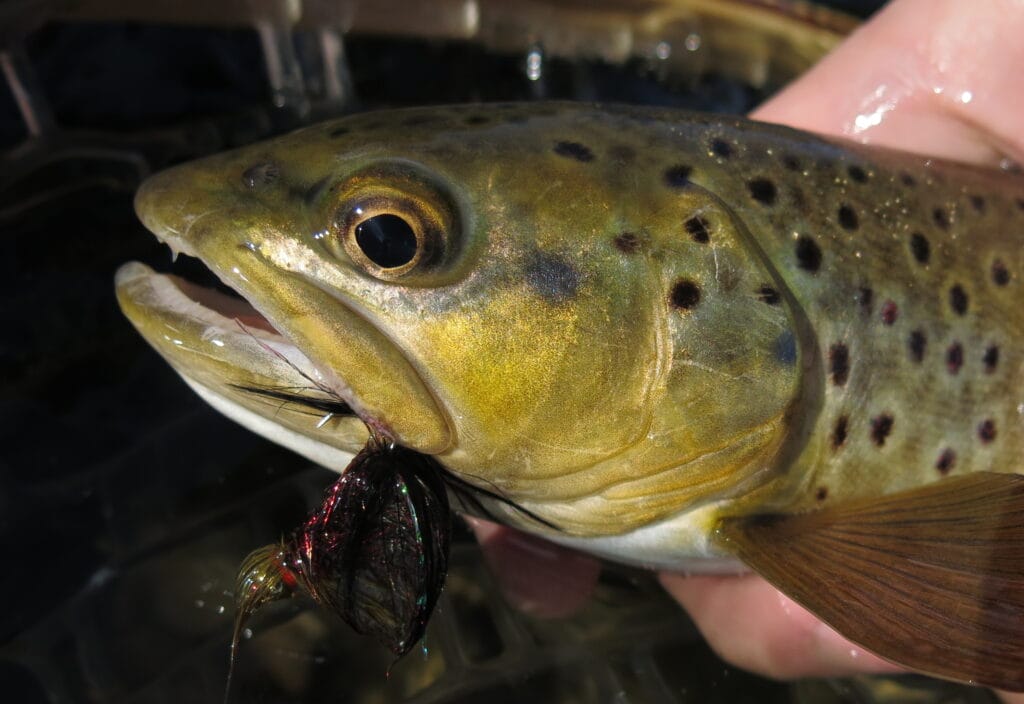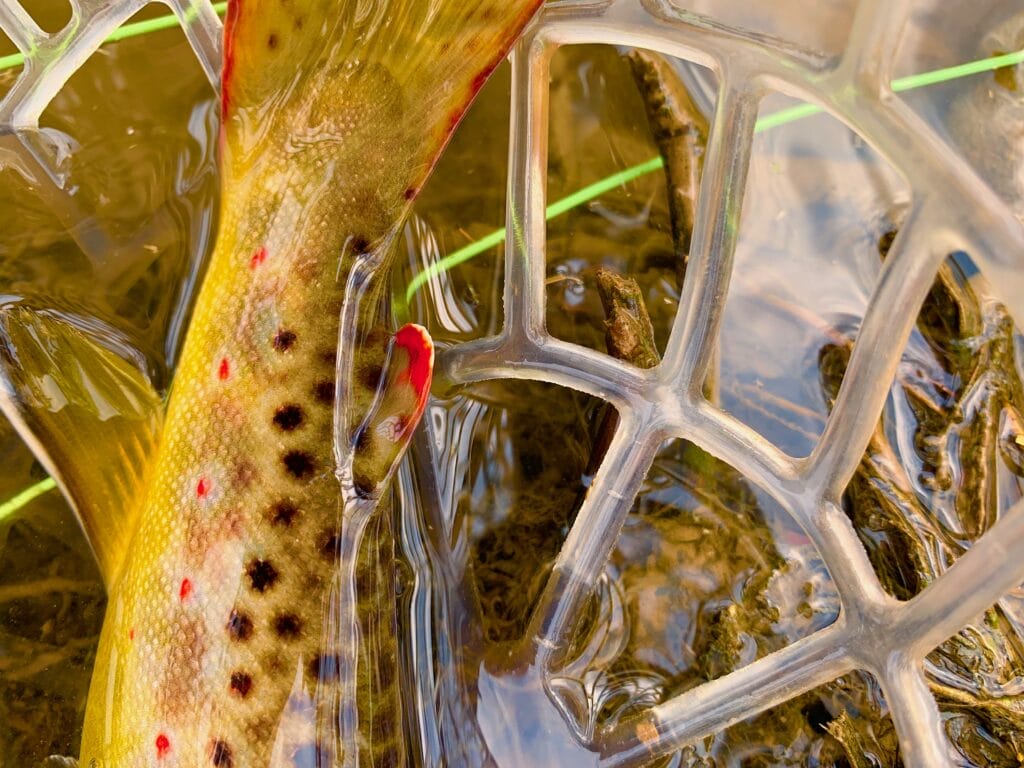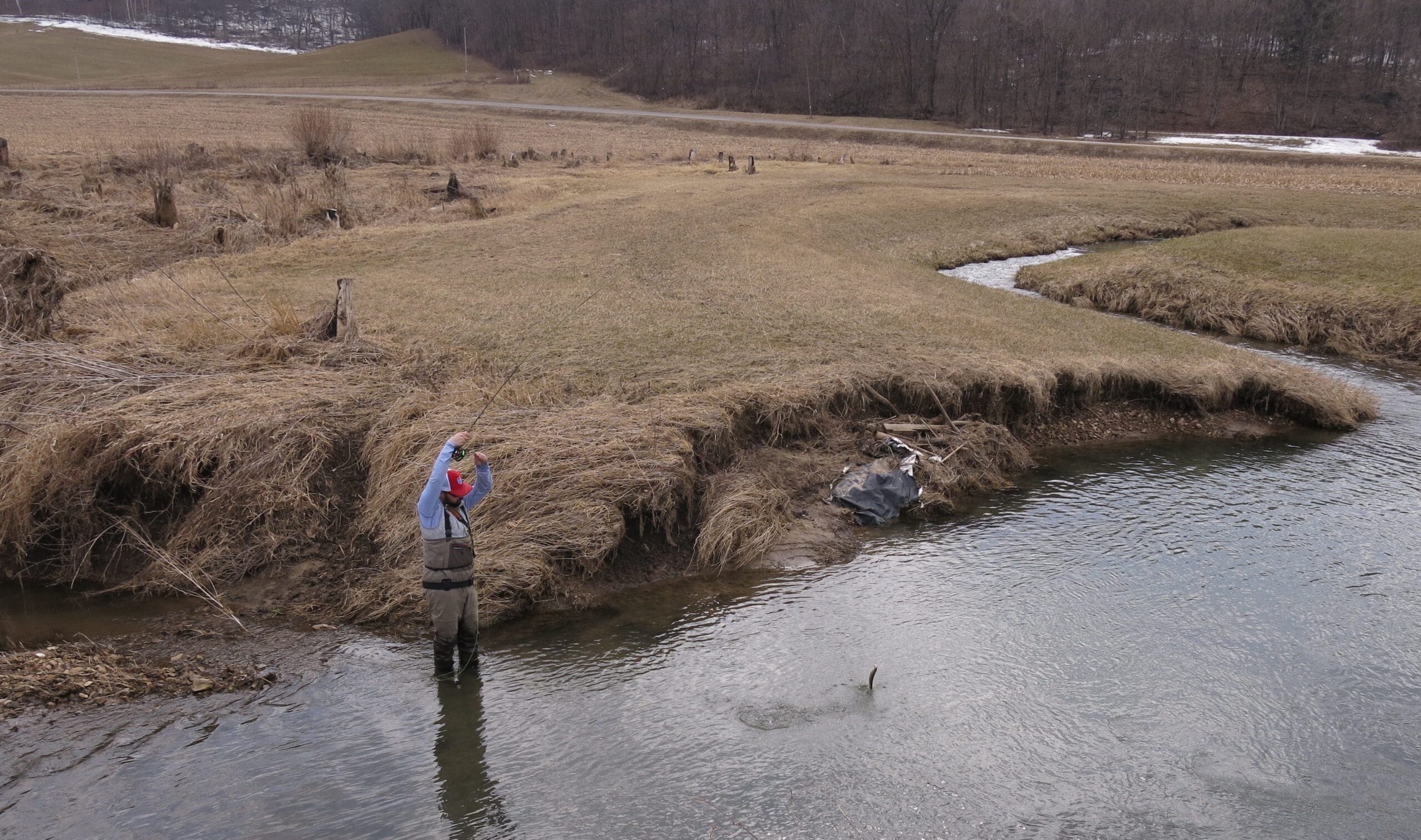Winter and early spring fishing can be remarkably good in the Driftless Area. However, flexibility is the name of the game in low temperatures. Generally, I favor the classic slow and deep approach. If I see no visible rises, I…
Winter and early spring fishing can be remarkably good in the Driftless Area. However, flexibility is the name of the game in low temperatures.
Generally, I favor the classic slow and deep approach. If I see no visible rises, I start out indicator fishing with a scud or a caddis on point and a Brassie or Trout Candy trailer. Success depends more on depth and presentation than fly selection, so I’m more inclined to fiddle with the amount of split shot I use or the length of line from my indicator than I am inclined to change flies.

The warmest time of the day seems to spark the most fish activity.
As temperatures warm, I love fishing leech patterns in the early season.
The Turkey Leech, which is made of a single turkey feather, can be deadly this time of year, but I prefer the tidier looking Balanced Leech tied in the style of Stillwater angler Phil Rowley. I honestly don’t think the fish care, but I do.
For moving water, I don’t bother tying the leech balanced style. My son calls this the Unbalanced Balanced Leech. That’s the way I do it, but this sure isn’t the only way.
I recently fished with a friend who surprised me by fishing a streamer the size of a hamster. He used a 10-foot 4-weight rod with a straight mono line and flipped his unweighted (but water-logged) hamster into fishy looking cover with remarkable ease. He was head-hunting big fish, but I was amazed that he caught several brook trout barely larger than the fly. Go figure.
A conventional angler will want to slowly work a leech/minnow looking crappie jig. A spinner can be effective by fishing it so slowly that the blade is just barely turning.

Of course, fly anglers will always be watching the surface closely for a midge hatch or a stray stonefly hatch. Due to the strangely warm weather this winter, we will probably see blue wing olives earlier than we normally expect.
Just a brief reminder that you want to check your state regulations before winter and early season fishing. Some states allow harvest and barbed hooks; some do not.
I don’t have any science to back this, but my early season fishing tends to be much less consistent in terms of numbers of fish caught than during any other time of the year. But whether I catch fish or not, every day outside this time of year feels like a bonus.



